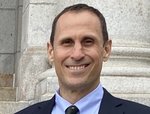

Minneapolis has 83 residential neighborhoods, 70 neighborhood associations, 13 wards, 11 communities and five precincts. If we do a health check based on gun violence, some of these places are not like the others.
According to the city's crime dashboard, there have been 6,711 shots fired calls citywide (as of this writing) and 408 gunshot wound victims. That's down from the 7,759 and 469 last year at this time. The numbers are a little misleading, though. Or as Mark Twain might say, "Facts are stubborn things, but statistics are pliable."
We could slice and dice the crime data in hundreds of ways. By precinct, ward, neighborhood. Look at the metrics like this. The city's never been more peaceful. Look at them like that. It's a war zone. Numbers are like a gambling junkie. Sometimes they're up, sometimes they're down. But the house always wins. The house, in this case, is reality. And the truth hurts.
A healthy community has access to education, money, career development, and safety net services. By any measure, many Minneapolis communities are not healthy at the moment. There's not enough education, economic opportunities or community services. The only safety nets are riddled with holes, hanging over a pack of angry sharks.
One neighborhood association is rethinking how block clubs work to see if they can help stop the suffering. Block clubs in Minneapolis have a history of helping local residents be informed, deter crime and build community. But there are limitations to the program. The biggest problem is that it's hard to know which blocks have block clubs and who are all the block leaders.
The crime prevention specialists in the Minneapolis Neighborhood and Community Relations department have access to the contact information about block clubs, including registered block club leaders. But due to data protection rules, crime prevention specialists cannot share the information about block leaders. As a result, block clubs are disconnected.
The Lowry Hill East Neighborhood Association (LHENA) wants to change this and plans to start by connecting the blocks in the Wedge. LHENA has developed a "Block by Block Model" based on restorative practices. The goal of restorative practices is to build community and manage conflict by repairing harm and building and strengthening relationships. By using restorative practices and a reimagined block club approach, a LHENA community building team is focused on developing restorative solutions and improving the quality of life for people in the neighborhood. Their ultimate objective is to create healthy communities for all people in Minneapolis.
The fundamental hypothesis of restorative practices is simple.
Human beings are happier, more cooperative and productive, and more likely to make positive changes in their behavior when those in positions of authority do things with them, rather than to them or for them.
Restorative practices get a bad rap and are commonly misunderstood. The field of restorative practices emerged in the early 2000s from the principles of restorative justice, but restorative practices extend beyond criminal justice. Because the restorative concept has its roots in the field of criminal justice, some people hear the word "restorative" and think restorative practices are reactive, only a response to crime and wrongdoing.
On the contrary, restorative practices are proactive. They restore, build and strengthen new relationships and social capital. They build trust, mutual understanding and shared values. These are the behaviors that bind us together and make cooperative action possible. They also could be the path to building a new reality, based on the "theory of everyone." This is the idea that we get better results in every setting if authorities give more voice and choice to all people, in exchange for taking more responsibility.
LHENA was chosen as the neighborhood to pilot a community public safety program in Minneapolis. Beginning in January 2022, a six-person LHENA core team comprised of Lowry Hil East residents, LHENA staff and Minneapolis community leaders went through six months of training and mentoring with Restorative Justice Community Action (RJCA), Minnesota Peacebuilding Leadership Institute (Peacebuilding) and community leader Manu Lewis.
I am one of LHENA's team members. Together, we have developed a restorative community building model that promotes healing, restorative practices and mutual aid. This model is centered on neighborhood blocks and provides a general framework for community building with the tools for success. The program has 10 steps and can be customized by any neighborhood to meet the unique needs and cultural specifications of any community.
The health of any community depends on the people who live, work, play and pray there. When community members are connected and help each other, more lives get access to opportunities. When community members care, more lives improve. Communities grow, prosper and get healthy. Everyone in the community benefits when communities are healthy. All of this starts on your block.
If you are interested in learning more about LHENA's community building block program or being involved, let us know at bit.ly/communityblockprogram.
Comments
No comments on this item Please log in to comment by clicking here